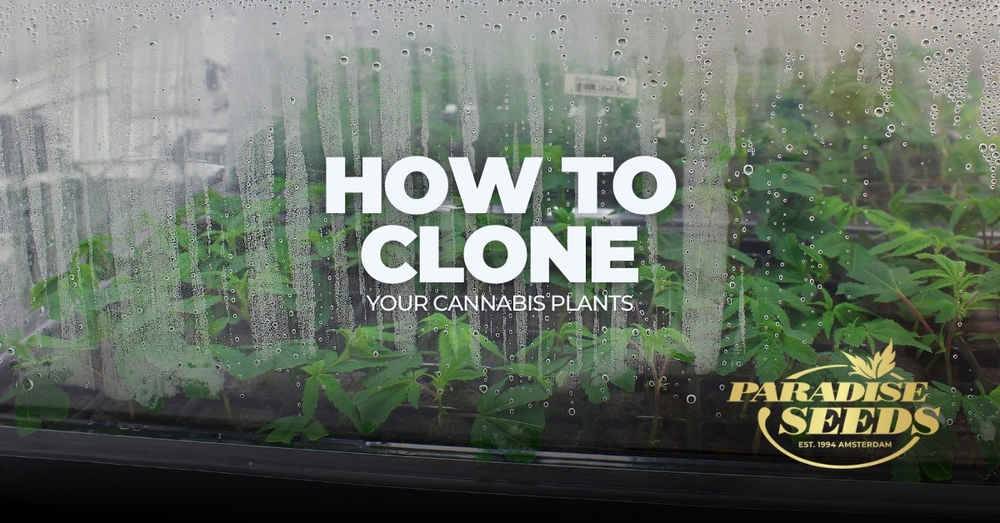As the legalization movement progresses, more and more countries are making it possible to buy cannabis clones or even try making clones at home. What are clones, what are the differences between clones and seeds? What results can you expect, and what advice is there about how to clone cannabis plants at home. These questions will be addressed in the following article.
Contents
What are clones?
Cannabis plants can start life in one of two ways: they can either be germinated from seed or propagated by cutting. The latter is called cloning. This involves cutting off a stem of the cannabis plant, to a length of about 10 cm in size and when put under the right conditions, the stem will take root and grow into a separate plant with identical DNA as the donor or mother plant.
How to clone cannabis plants: Selecting the Mother
The key to successfully cloning cannabis plants involves selecting the right plant and timing. It’s best to choose genetics that you are familiar with and have had positive experiences with regarding growth, potency and flavor. Simply put, your favourite plant or ‘keeper’.
It’s always advised to make sure your mother plant is in optimal conditions when making clones to give it the best start and have it experience the least stress.
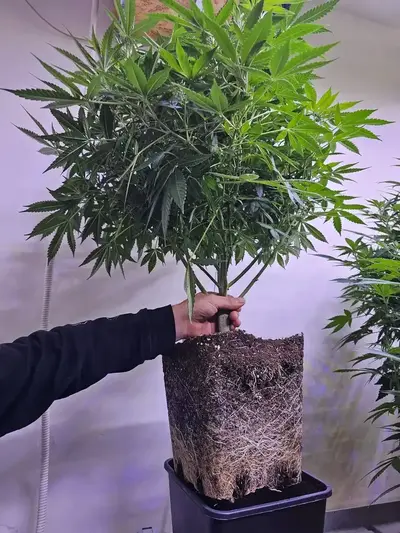
When is the right time to clone?
To collect a healthy clone, it’s best if the parent plant has been in the vegetative stage for at least one month, as more mature plants are easier to clone, and their cuttings root faster.
It’s best to take clones on a consistent basis, more or less pruning the mother plant every couple of days. Ensuring you can take newly established branches that are ‘fresh’.
Taking cuttings while the plant is flowering, although possible, is not advised. It ensures significant stress, as it needs to transition back into the vegetative stage, thus decreasing its chances of survival.
Which parts are best suited for cloning?
According to their position on the plant, the lower stems are typically easier to clone, as the parts closest to the root and the main stem contain the best ratio of the natural hormone, needed for root development.
Choosing branches that are fresh and display 1 – 3 pairs of leaves is usually best.
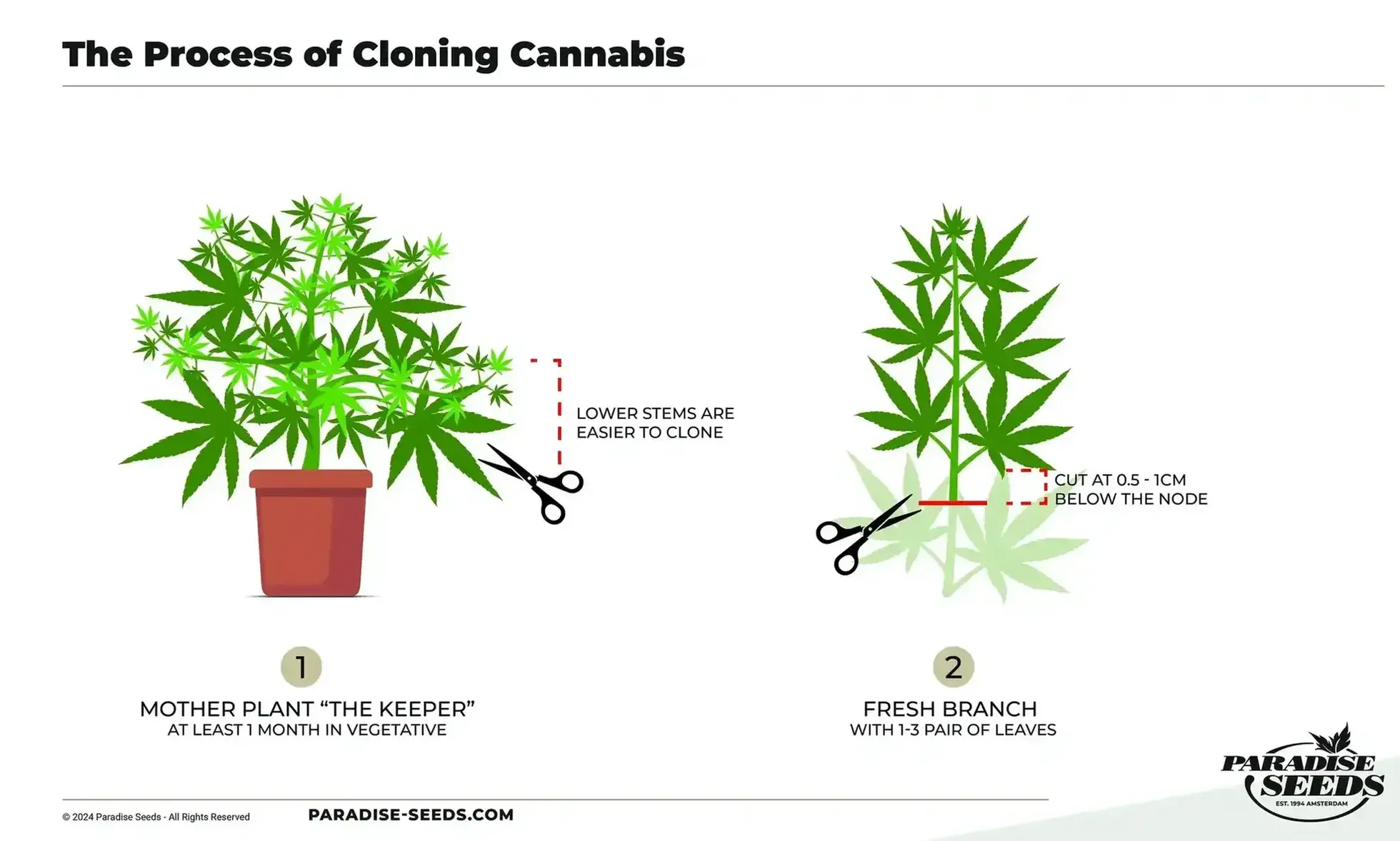
A guide to the process of cloning cannabis plants
Preparations
Before you start taking cuttings from your plant, make sure you have the following items prepared:
- A water jar with pH of 5.8 – 6.2
- Cloning gel (optional)
- Well moisturized medium (i.e. rockwool, coco/peat plugs)
- A cloning dome or propagator
- Sterile scissor(s) / scalpel(s)
One of the most important things to do when cloning cannabis plants is to make sure your tools are sterile. As you cut the plant, this is a place where infection can take place, leading to less vigorous plants or sick plants. The chances of this happening increase as you continue to take cuttings from a plant with unsterile tools.
We recommend also to re-sterilize your scissor(s) or scalpel(s) after each use, and especially when using it interchangeably between multiple plants. As certain viruses and viroids like Mosaic Tabacco Virus and HLVD (also known as HPLVD) can be transmitted between plants if not done correctly.
Taking a Cutting
To take a cutting, use a pair of sterile scissor(s)/scalpel(s) and choose a fresh and healthy branch with at least two nodes at the end. Make a straight cut 0.5 – 1 cm below the node. Avoid making diagonal cuts at this stage, as it may create a larger wound on the parent plant, allowing more chance of infection.
Cut the bottom of your freshly taken cutting diagonally to allow more surface area for roots to develop.
When you have your cannabis clone, it’s essential to keep the cutting tip moist. If the surface is exposed to air for a long time, the cells on the surface may start to decompose, which can lead to issues with rooting. If it dries out, it can no longer take root, cut back the stem end a little bit.
Use rooting hormones
Although using hormones is not necessary when cloning cannabis plants, it can significantly help with root development and speed of rooting.
If you are using rooting hormones, dip the freshly cut stem of the cutting in the hormone, covering it with the rooting gel or powder. There are different rooting hormones that provide different support like root cell development or prevention of stem rot.
*Avoid excess powder, as a thick layer can hinder root development.
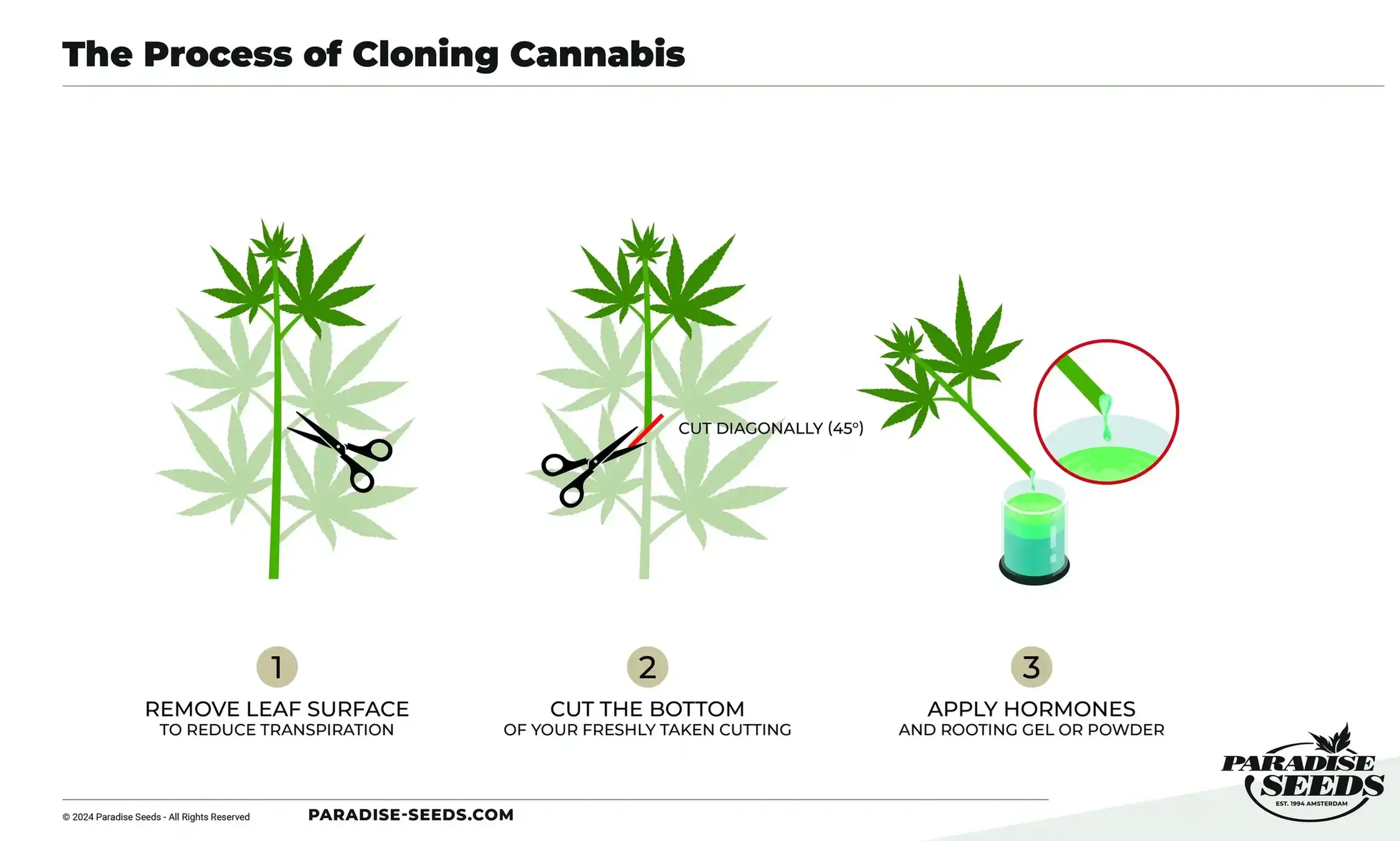
In the plug
Cannabis clones prefer a slightly acidic medium with a pH of around 5.5-6.0. Maintaining this pH range can be critical for successful rooting during the process of cloning cannabis plants. Make sure the plug (i.e. rockwool, coco/peat plugs) has this slightly acidic medium and is moist.
Freshly cut clones need stability and should not be allowed to move until the root system is well developed. It’s crucial to ensure that the medium thoroughly surrounds the stem and always remains moist. The simplest method for achieving this is using cloning trays designed for this purpose. These trays allow you to place the clones in individual cells and then position them in a dome, which should keep the medium moist.
Under the dome
Since cannabis clones release water into their surroundings, or transpire, they can quickly become dehydrated in an unsuitable environment, ultimately leading to their demise.
To prevent this, it is vital to maintain high humidity levels and climate settings management is a key tool in growing healthy plants in general. This is typically achieved by covering the cloning trays with a dome, creating a small microclimate that keeps the medium moist.
It’s advised to shut any dome vents to keep the climate inside as steady as possible for at least 10 days. After which you can slowly let it become accustomed to a more normal climate by opening the vents in the dome for a couple of days. When you open the vents, be aware that moist escapes the dome, and medium might lose water content, so check this regularly.
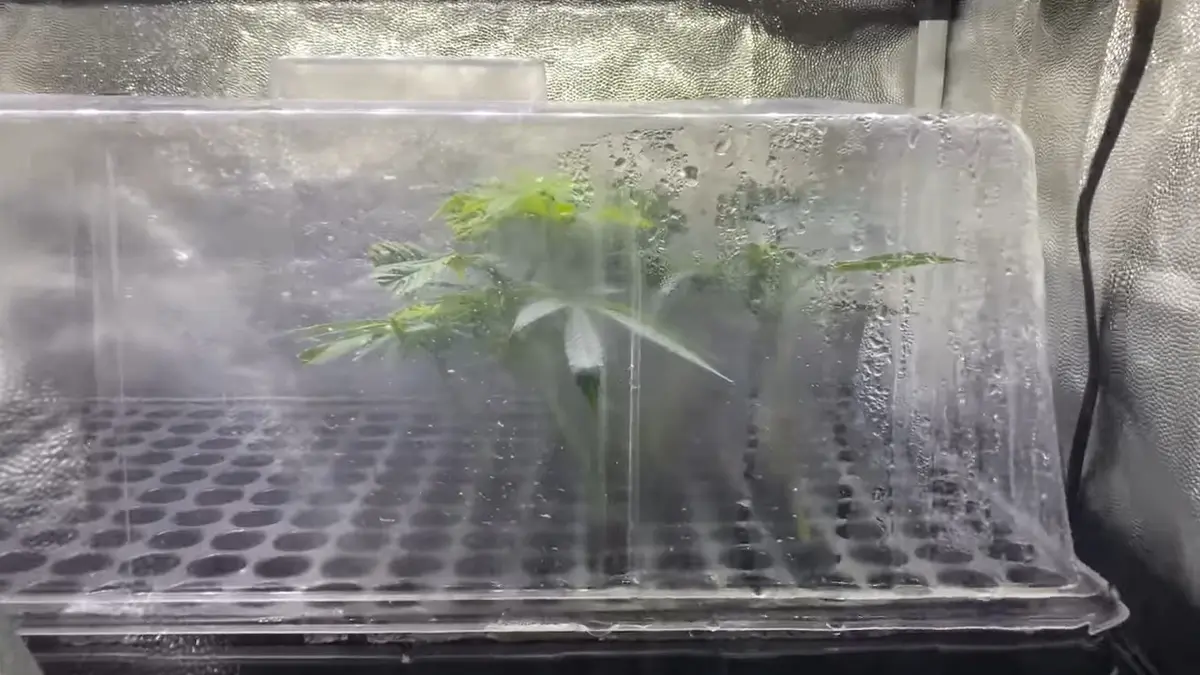
- Temperature: we recommend a temperature between 24-27°C with as little fluctuations as possible.
- Relative Humidity: Relative Humidity (RH), which should be kept between 75% and 85% during the early stages of cloning.
- Light intensity: A PPFD of around 100-200 μmol/m²/s is ideal for clones. Low-intensity light prevents the clones from expending too much energy on photosynthesis while they establish roots.
- Light cycle: Stick to the light cycle the donor plant had before the cuttings were taken ensures the least stress possible. Make sure it’s at least 18 hours light.
Be patient
Don’t be concerned if the clones are wilting with drooping leaves a few days after planting. This is a natural part of the process of clonng cannabis plants caused by water loss from the cells.
Trimming the ends of the clone’s fan leaves can be beneficial, as it allows the clone to use more energy to grow roots with less plant material to maintain.
Under ideal conditions, cell division will begin after around five days, and root growth can be expected within a week. However, depending on the growing medium, it may not be visible at first.
Although wilting and drooping leaves are fine, when you spot signs of dying or mold, remove the clone or the infected part of the clone, as it is very unlikely it will develop to be a nice and healthy clone.
After the roots emerge from the peat moss or Rockwool cube, the clone is ready to be transplanted into a larger sized medium.
Key takeaway: Be patient! Some varieties root faster than others in the process of cloning cannabis plants.
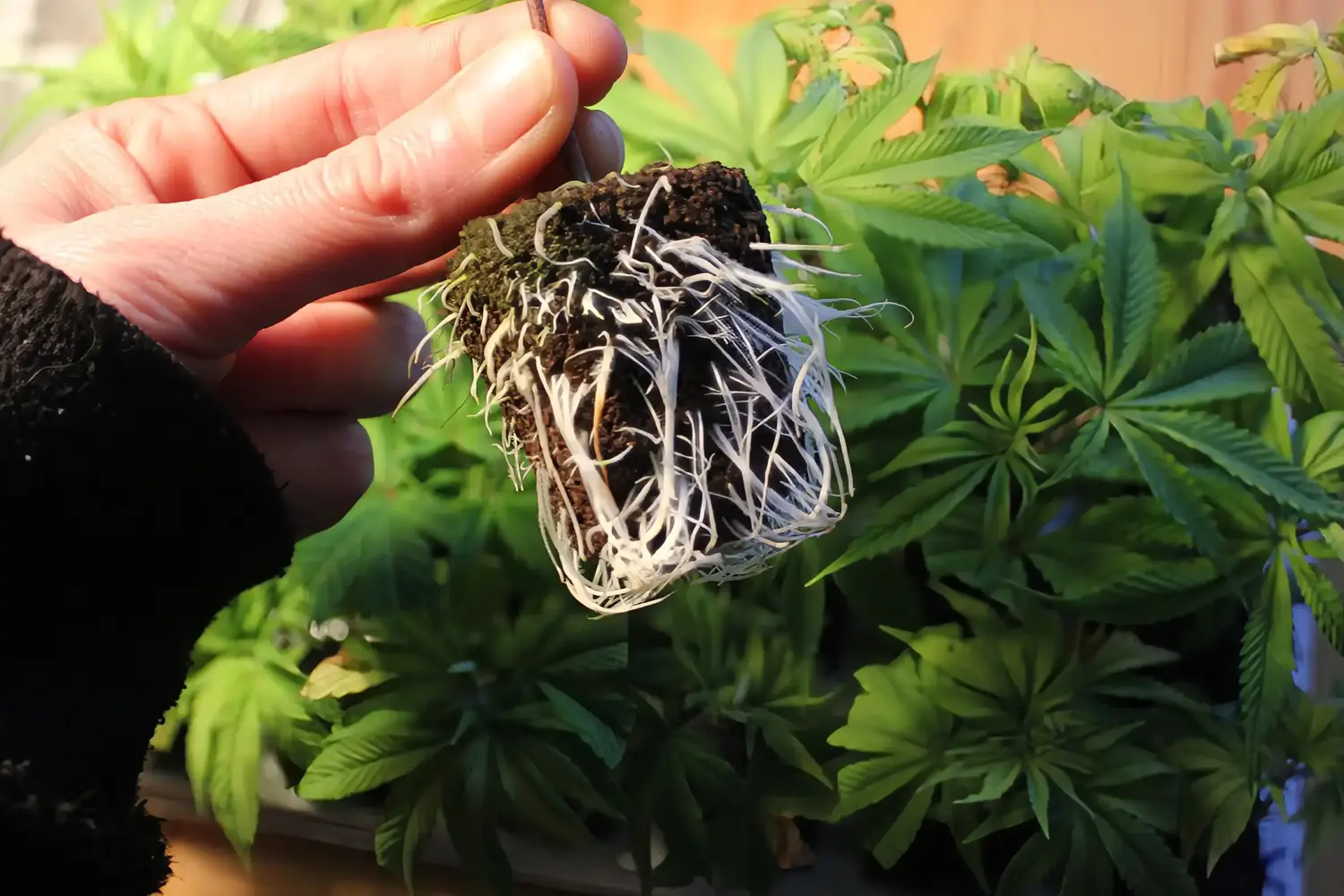
Can autoflowering cannabis varieties be cloned?
In short: Technically YES, but NOT Recommended
If the question is whether the process is technically feasible for plants grown from autoflower seeds, the answer is yes. If, on the other hand, it is a question of whether the method can be used to harvest at least a moderate yield, then the answer is a resounding no.
A cloned cutting, the same age as the parent plant, needs at least 3-4 weeks to develop sufficiently in the vegetative phase. Unlike photoperiod cannabis plants, an autoflower plant cannot spend longer in the vegetative stage, and it will start flowering within a few weeks of rooting. Therefore, the poor plant has no chance to start flowering as a mature, vigorous plant.
The benefits of cloning cannabis
Sticking with tomatoes, there are home gardeners who find it more convenient not to have to start the growing process from scratch. They may have more confidence in the expertise of others, so they would prefer to be involved in growing a seemingly healthy plant rather than the initial excitement.
The undeniable advantage of this method is genetic consistency. Clones maintain the same inherited traits as the parent plant. However, this can also be a drawback. If the original plant has undesirable traits, all its clones will inherit them. In contrast, growing from seeds may produce a wider variety of traits, potentially leading to more favorable outcomes.
When starting with clones, the growing time is shortened. Clones are placed in the soil at a more advanced stage than seeds, so they usually reach the flowering stage earlier, depending on the cloning technique. If you know the clone’s origin and are sure it comes from a vigorous mother, you can shorten the growing cycle without much risk.
You can also save money by using clones. A mother plant can produce numerous offspring with the same characteristics.
The downsides of cloning
Cloning offers the advantage of genetic consistency, but it can also pose a disadvantage in some situations. If a parent plant has an undesirable trait, all its offspring will inherit the same undesired trait.
As previously mentioned, newly cut clones are highly susceptible to environmental influences because they lack the fundamental organ, the taproot, to anchor themselves in the growing medium and absorb nutrients. Therefore, the initial cloning period can be quite challenging, and losses should be anticipated. As you become more accustomed to cloning, you become more accustomed to what the plant requires during this period, and your success rate should increase.
Some cannabis strains are more challenging to root when cloning. This can cause problems if you’ve chosen a difficult strain for cloning, potentially ruining your cultivation plan. If you’re dealing with a tricky-to-clone plant, seeking expert assistance for successful cloning might be necessary.
Clones brought in from outside can introduce pests and diseases more easily into the growing room than seeds do, posing a threat to other plants. For this reason the seeds vs clones topic is the source of much debate.
One of the lesser-known challenges with long-term cannabis cloning is genetic drift. Over time, repeated cloning from the same mother plant can result in subtle changes in the plant’s genetic expression, even though the clones share the same DNA. This can lead to differences in traits like potency, yield, or resilience.
Factors such as environmental stress, nutrient imbalances, and improper cloning techniques can accelerate genetic drift, causing the clones to gradually deviate from the characteristics of the original plant. To minimize this, growers often replace mother plants regularly and carefully monitor their growing conditions.
Tissue Culture and Cloning
While traditional cloning techniques are widely used, tissue culture is an emerging technology offering even greater precision and efficiency.
Tissue culture, also known as micropropagation, allows growers to reproduce cannabis plants from a small sample of tissue in a sterile environment (in-vitro).
This method ensures the propagation of disease-free plants, making it especially useful for preserving elite genetics over time. Unlike standard cloning, tissue culture can produce thousands of identical, pathogen-free plants from a single plant sample, making it invaluable for large-scale commercial operations.
So, is it worth cloning cannabis or not?
You are the only one who can answer this question by carefully considering your own needs and the advantages and disadvantages of each method. As a seedbank, we naturally lean towards seed production, but it’s not the only way to go. We encourage you to experiment with both options to choose the one that suits you best before each cultivation.
We hope you found this article interesting and if you have any experience with cloning, let us know in the comments.
References
Lastly, on your quest for knowledge, we recommend to read up on the topic more and a great way to do so is with our Paradise suggestions, like the ones below.
A 2019 study by Lata et al. (2019) demonstrated that synthetic auxins like IBA increase the success rate of cannabis cloning by nearly 25% compared to natural methods.
Shinozaki et al. (2020) discussed the role of gibberellins and their interaction with auxins in root and shoot development, providing a deeper understanding of hormonal interactions.
Gibberellins and Auxin Crosstalk in Cannabis (Shinozaki et al., 2020): Discusses hormonal regulation during vegetative and rooting stages.
Lata et al. (2019): Focused on the effect of synthetic rooting hormones (IBA, NAA) on the success rate of cannabis cloning.
Tissue Culture Cloning (Smith et al., 2018): Provides insights into more advanced cloning techniques used in commercial cannabis production.



